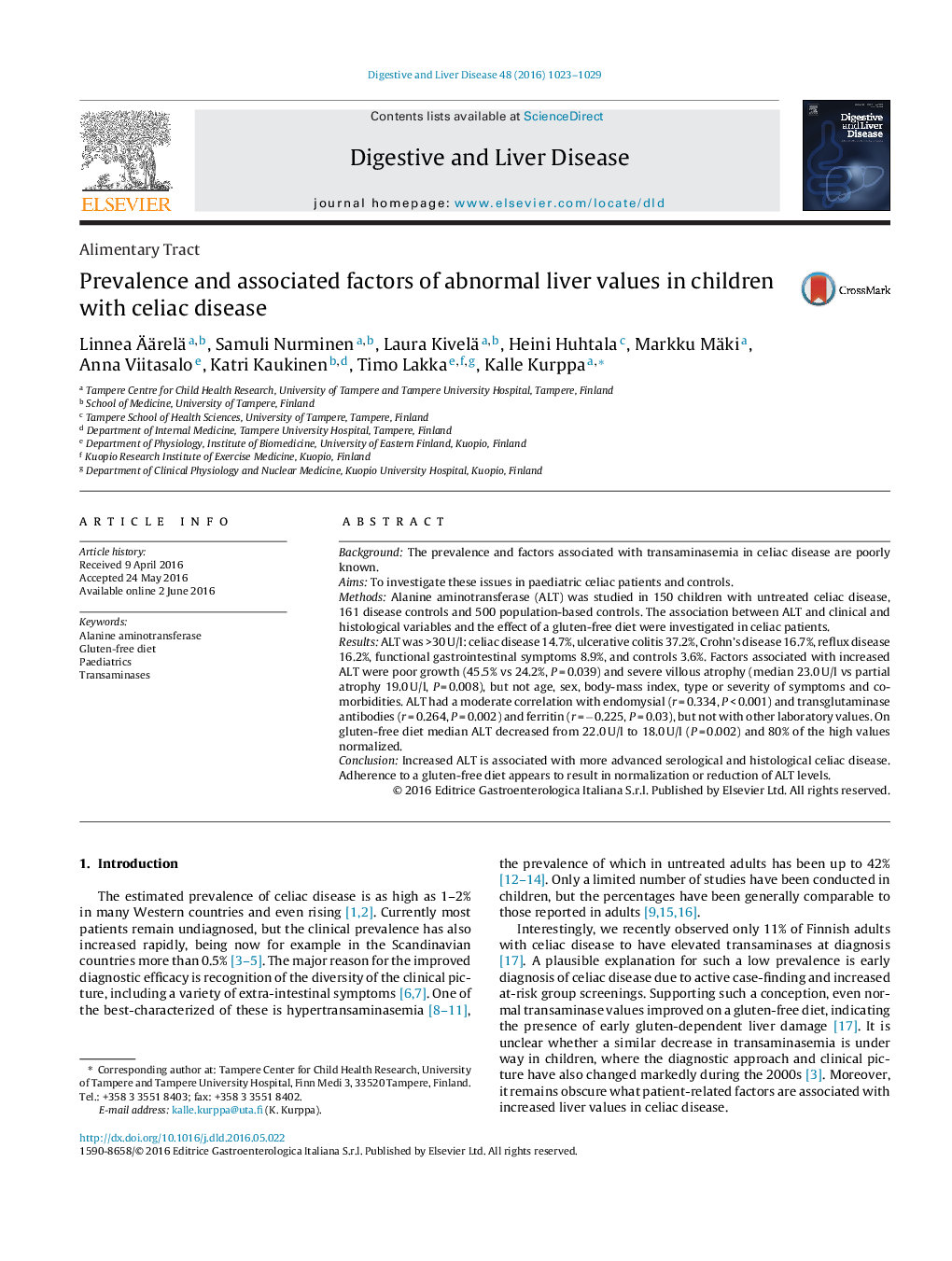| Article ID | Journal | Published Year | Pages | File Type |
|---|---|---|---|---|
| 3261183 | Digestive and Liver Disease | 2016 | 7 Pages |
BackgroundThe prevalence and factors associated with transaminasemia in celiac disease are poorly known.AimsTo investigate these issues in paediatric celiac patients and controls.MethodsAlanine aminotransferase (ALT) was studied in 150 children with untreated celiac disease, 161 disease controls and 500 population-based controls. The association between ALT and clinical and histological variables and the effect of a gluten-free diet were investigated in celiac patients.ResultsALT was >30 U/l: celiac disease 14.7%, ulcerative colitis 37.2%, Crohn's disease 16.7%, reflux disease 16.2%, functional gastrointestinal symptoms 8.9%, and controls 3.6%. Factors associated with increased ALT were poor growth (45.5% vs 24.2%, P = 0.039) and severe villous atrophy (median 23.0 U/l vs partial atrophy 19.0 U/l, P = 0.008), but not age, sex, body-mass index, type or severity of symptoms and co-morbidities. ALT had a moderate correlation with endomysial (r = 0.334, P < 0.001) and transglutaminase antibodies (r = 0.264, P = 0.002) and ferritin (r = −0.225, P = 0.03), but not with other laboratory values. On gluten-free diet median ALT decreased from 22.0 U/l to 18.0 U/l (P = 0.002) and 80% of the high values normalized.ConclusionIncreased ALT is associated with more advanced serological and histological celiac disease. Adherence to a gluten-free diet appears to result in normalization or reduction of ALT levels.
